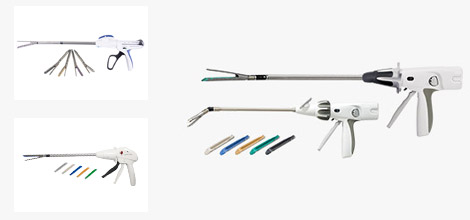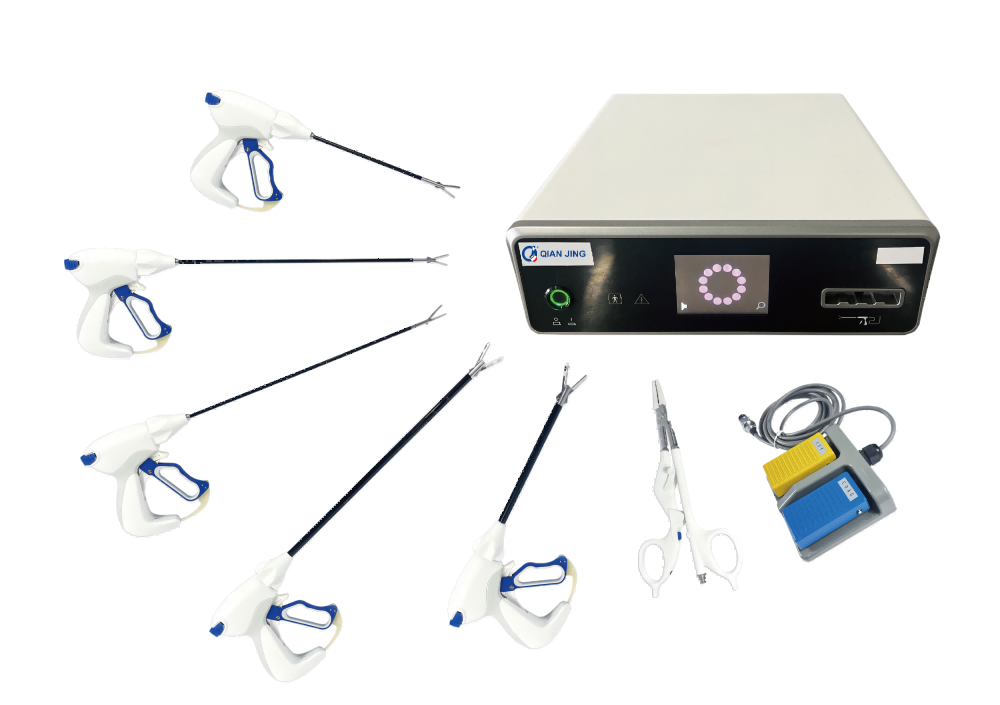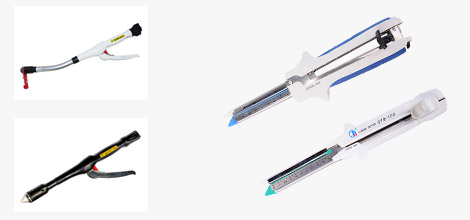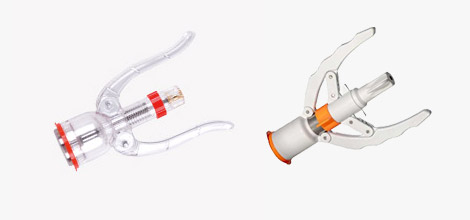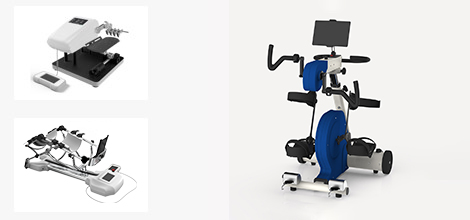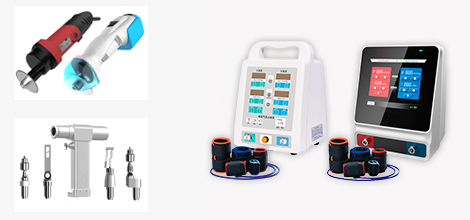Structural features and considerations of the Endoscopic Linear Cutter Stapler
The Endoscopic Linear Cutter Stapler is a device used in medicine as an alternative to manual suturing. The main working principle is to dissociate or anastomose tissue using titanium staples, similar to a stapler. Depending on the scope of application, they are mainly classified as circular anastomoses for the digestive tract (esophagus, gastrointestinal, etc.), rectal anastomoses, circular hemorrhoid anastomoses, circumcision anastomoses, vascular anastomoses, hernia anastomoses, pulmonary cutter staplers, etc.
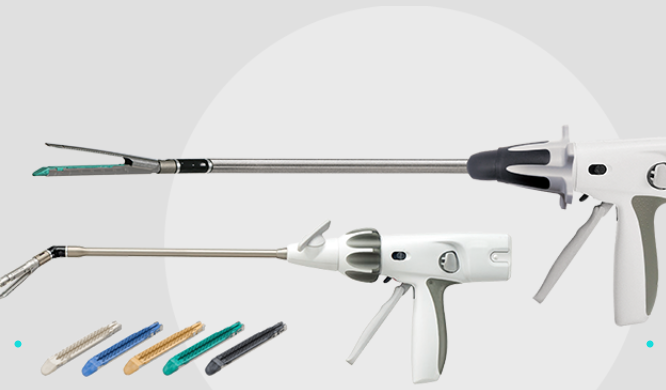
Compared to traditional manual suturing, instrumentation suturing has the following advantages.
1. Simple and convenient operation, saving surgical time.
2. Single-use, avoiding cross-infection.
3. Titanium or stainless steel staples (skin sutures) are used to close tightly and loosely.
4. Has few side effects and effectively reduces surgical complications, etc.
Endoscopic Linear Cutter Stapler has a push rod and ring knife connection structure, including a push rod, a ring knife fixedly connected to the push rod, a plurality of push nail pieces arranged in a circular direction on the outer side of said ring knife, and one end of the ring knife embedded on said push rod. Because one end of the ring knife is embedded on the push rod, the concentricity of the ring knife and the push rod is high, and the ring knife can sit smoothly in the middle during the cutting of tissues, and the success rate of surgery is high.
The nail pushing device of the Endoscopic Linear Cutter Stapler includes a nail compartment body 6, a nail pushing blade body 1, a first guide wall 9 at each end of the first side wall 7 of the nail compartment hole 5, and a second guide wall 10 at each end of the second side wall 8, the first guide wall 9 and the second guide wall 10 at the same end intersect and have an arcuate transition at the intersection, the same The first guiding wall 9 and the second guiding wall 10 are set symmetrically; in case of small changes in the geometry of the staple, they are securely positioned in the hole of the staple compartment by the action of the guiding wall, ensuring that the width of the pushing staple piece is larger than the width of the staple crown and making the staple well formed.
The Endoscopic Linear Cutter Stapler has a connection structure between the piercing cone and the nail holder, comprising a nail holder and a piercing cone with a spring fixed to the nail holder, between which the piercing cone is inserted and which clamps the said piercing cone. The spring force of the spring allows the nail holder to be reliably attached to or detached from the piercing cone, making it safe to use and easy to install.
Two-speed adjustment device for the Endoscopic Linear Cutter Stapler, comprising an anastomotic body, a knob body rotatably connected to said anastomotic body, a screw threadedly connected to said knob body, which is inserted in the inner cavity of said anastomotic body, the front part of which is connected to a central rod in the inner cavity of the anastomotic body, said screw having a first threaded section and a second threaded section connected, said first threaded section having a pitch greater than the pitch of the second threaded section. The distance between the staple compartment and the staple holder can be quickly closed and the second threaded segment slides against the knob body, which makes the screw move slower when the knob is turned and facilitates the procedure in the digestive tract.
The adjustment knob of the Endoscopic Linear Cutter Stapler comprises a knob body that is rotatably connected to the anastomotic body, which is threaded with a screw; the knob body is provided with radially enlarged radial projections, of which there are at least two. The radial projections make the knob butterfly-shaped, so that when the finger pushes the radial projections, the knob can be rotated by direct torque, and the human tissue can be easily compressed to a predetermined thickness with little friction between the finger and the radial projections, effectively preventing the operator from breaking the latex gloves.
Endoscopic Linear Cutter Stapler's Anastomosis staple, consisting of a staple crown, a staple leg forming a roughly U shape, said staple leg having a bent section, the upper part of which is the upper part of the staple leg, the lower part of which is the lower part of the staple leg, the lower part of which is bent inward relative to the upper part of the staple leg at the bent section, and the staple leg having a staple length of 4.84 mm-4.92 mm. The height of the nail leg of the anastomosing nail can be formed normally, and the nail leg is bent at the bend part after forming, which improves the probability of standard forming.
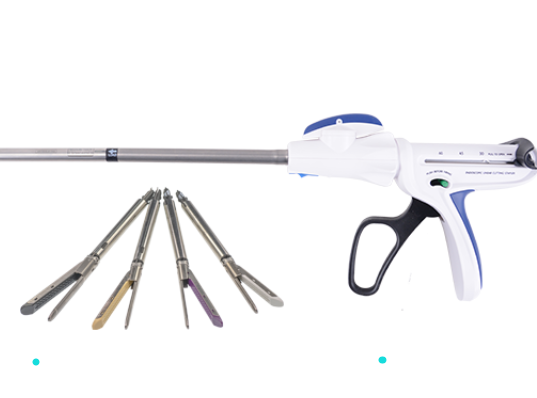
Precautions for Endoscopic Linear Cutter Stapler.
(1) Before operation, check whether the scale and 0 scale are aligned, whether the assembly is correct, and whether there is a missing push piece and tantalum nail. A plastic washer should be placed inside the offset needle holder.
(2) The severed end of the intestine ready for anastomosis should be fully freed and stripped at least 2 cm.
(3) The stitch distance of the purse-string suture should not exceed 0.5 cm and the margin should be 2-3 mm. Too much tissue is easily embedded in the anastomosis and hinders the anastomosis, and care should be taken not to miss the mucosa.
(4) Adjust the spacing according to the thickness of the intestinal wall, 1 to 2 cm is appropriate.
(5) Check the stomach, esophagus and other adjacent tissues before striking to prevent entrapment into the anastomosis.
(6) Cut quickly and apply pressure at the end to make the staple into a "B" shape, and strive for a single successful cut, or re-cut twice if it is considered inaccurate.
(7) Exit the Endoscopic Linear Cutter Stapler gently and check whether the cut tissue is a complete loop.



 info@qjmed.com
info@qjmed.com